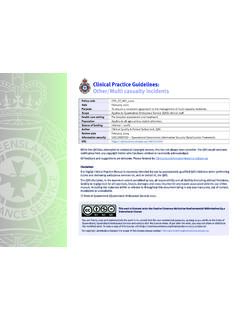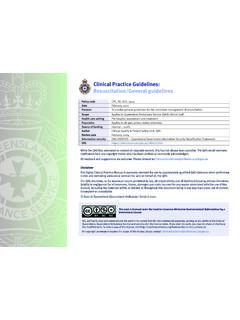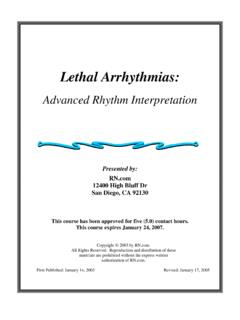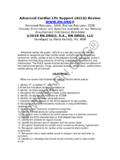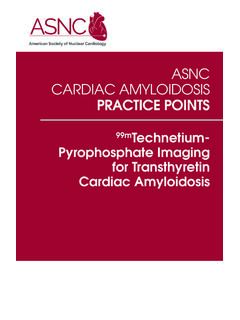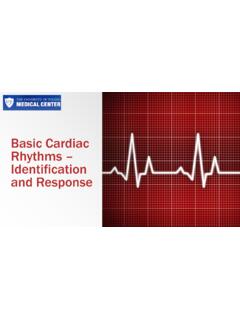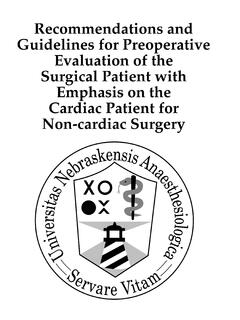Transcription of Clinical Practice Guidelines: Cardiac/Acute coronary syndrome
1 While the QAS has attempted to contact all copyright owners, this has not always been possible. The QAS would welcome notification from any copyright holder who has been omitted or incorrectly acknowledged. All feedback and suggestions are welcome. Please forward to: The Digital Clinical Practice Manual is expressly intended for use by QAS paramedics when performing duties and delivering ambulance services for, and on behalf of, the QAS. The QAS disclaims, to the maximum extent permitted by law, all responsibility and all liability (including without limitation, liability in negligence) for all expenses, losses, damages and costs incurred for any reason associated with the use of this manual, including the materials within or referred to throughout this document being in any way inaccurate, out of context, incomplete or unavailable.
2 State of Queensland (Queensland Ambulance Service) work is licensed under the Creative Commons Attribution-NonCommercial-NoDerivatives International LicenseYou are free to copy and communicate the work in its current form for non-commercial purposes, as long as you attribute the State of Queensland, Queensland Ambulance Service and comply with the licence terms. If you alter the work, you may not share or distribute the modified work. To view a copy of this license, visit copyright permissions beyond the scope of this license please contact: codeCPG_CA_ACS_0120 DateJanuary, 2020 PurposeTo ensure consistent management of patients with acute coronary to Queensland Ambulance Service (QAS) Clinical care settingPre-hospital assessment and to all ages unless stated of fundingInternal 100%AuthorClinical Quality & Patient Safety Unit, QASR eview dateJanuary, 2023 Information securityUNCLASSIFIED Queensland Government Information Security Classification Practice Guidelines: Cardiac/Acute coronary syndrome84 QUEENSLAND AMBULANCE SERVICEA cute coronary syndrome (ACS) refers to the spectrum of conditions resulting from myocardial ischaemia.
3 It encompasses ST-elevation myocardial infarction (STEMI), non-ST elevation myocardial infarction (NSTEMI) and unstable angina (UA). ACS should be clearly distinguished from stable angina that is typically aggravated by exertion or emotional stress and is relieved quickly with rest and/or sublingual glyceryl trinitrate (GTN) administration.[1] ACS will usually present with chest pain and/or discomfort however, certain groups of patients may present with atypical symptoms, for example, women, older people and patients with diabetes mellitus, congestive cardiac disease or renal failure.[2,3] Clinical features Chest pain and/or discomfort (described as burning, pressure or tightness) Referred pain ( arms or jaw/teeth) Dyspnoea Diaphoresis Nausea and/or vomiting Feeling of impending doomAcute coronary syndromeComplications of ACS include arrhythmia, cardiac failure, acute valvular or septal rupture, cardiogenic shock and death.
4 Early diagnosis and aggressive care is vital, including time-critical reperfusion therapy for patients with STEMI.[4,5]Figure January, 2020 Definitive hospital diagnosis of ACS is based on history, 12-Lead ECG analysis and enzymes. a normal 12-Lead ECG does not rule out WHEN PRINTED UNCONTROLLED WHEN PRINTED UNCONTROLLED WHEN PRINTED UNCONTROLLED WHEN PRINTED85 QUEENSLAND AMBULANCE SERVICE Risk Assessment Additional information The terminology used to describe ACS continues to evolve with STEMI also being known as ST-segment-elevation acute coronary syndrome (STEACS) and NSTEMI also being known as non-ST-elevation acute coronary syndrome (NSTEACS). All STEMI cases mandate CCP or ACP2 involvement where available and facilitation of early reperfusion normal 12-Lead ECG, Clinical assessment and vital signs, does not rule out patients with chest discomfort or pain (typical or atypical ) MUST be transported to hospital for further risk features on assessment include.
5 [4] Repetitive or prolonged (> 10 minutes ) ongoing chest pain and/or discomfort Persistent or dynamic ST-depression ( mm) or new T-wave inversion ( 2 mm) Transient ST-segment elevation ( mm) in 2 or more contiguous leads Hypotension (< 90 mmHg systolic) Sustained VT Syncope Left ventricular dysfunction Prior PCI (within 6 months) or history of coronary artery bypass graft Presence of known diabetes mellitus or renal factors for ACS include: Male Advancing age Smoking Hypertension Hyperlipidaemia History of prior ischaemic heart disease Family history of ACSR ight ventricular myocardial infarction (RVMI)Approximately one third of patients with inferior STEMI will have a concurrent RVMI.[6,7] Patients with haemodynamically significant RVMI will typically present with hypotension, jugular vein distension and clear lung fields.
6 ST-elevation in V4R, is indicative of RVMI and correlates closely with occlusion of the proximal right coronary RVMI the maintenance of preload is vital and appropriate volume loading to maintain cerebral perfusion is indicated if haemodynamic compromise occurs. Similarly, pharmacological agents which reduce preload ( GTN) should be used with extreme caution to prevent detrimental side WHEN PRINTED UNCONTROLLED WHEN PRINTED UNCONTROLLED WHEN PRINTED UNCONTROLLED WHEN PRINTED86 QUEENSLAND AMBULANCE SERVICE Additional information (cont.) Very high risk NSTEMI (NSTEACS) patients can benefit from early pPCI[8]. Where possible, patients presenting with recurrent dynamic or widespread ST-segment and/or T-wave changes associated with any of the following high risk criteria should, where possible, be transported to an Emergency Department of a hospital with pPCI capabilities:- ongoing ischaemia; haemodynamic compromise; arrhythmias; and/or - acute heart failure.
7 All cases where a STEMI has been identified or suspected by a paramedic with a Clinical level of ACP2 or above (including those not trained in reperfusion) are subject to specific data collection. This should be facilitated by the completion of a STEMI Data Capture Form by the treating paramedic and adherence to the following process:- On the eARF select final assessment as Acute Myocardial Infarction and complete documentation in accordance with current Forward the appropriate pPCI Referral Checklist, eARF, STEMI Data Capture Form and 12-Lead ECG to:Manager, cardiac Outcomes ProgramInformation Support, Research & Evaluation UniteCPG: Clinician safetyCPG: Standard caresYTransport to hospitalPre-notify as appropriateNote: Clinicians are only to perform procedures for which they have received specific training and authorisation by the ECG consistent with STEMI?
8 NConsider:pPCI REFERRAL Ticagrelor (or alternative if advised by the Interventional Cardiologist) HeparinPRE-HOSPITAL FIBRINOLYSIS ADMINISTRATION Tenecteplase Enoxaparin Clopidogrel Oxygen GTN Aspirin Antiemetic Fentanyl (preferred narcotic for ACS)12-Lead ECG (within 10 minutes)Consider:Complete and forward necessary documentation (see Additional Information )to the QAS Information Support, Research & Evaluation UnitTransport to hospitalPre-notify as appropriateUNCONTROLLED WHEN PRINTED UNCONTROLLED WHEN PRINTED UNCONTROLLED WHEN PRINTED UNCONTROLLED WHEN PRINTED





